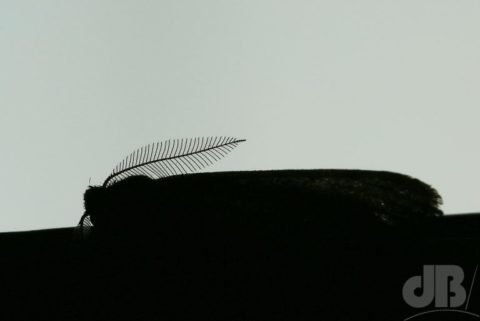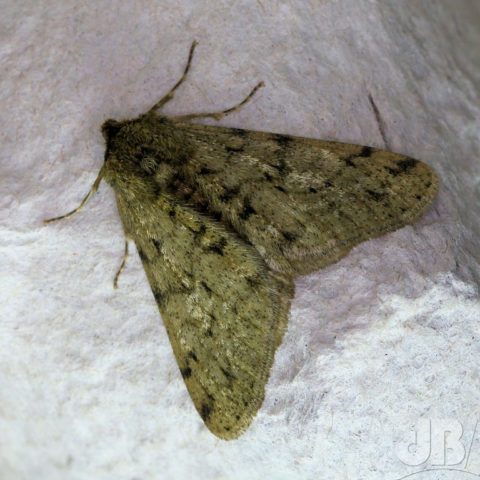TL:DR – The males of many species of moth have feathery antennae to detect the sex attractant pheromones released by the females to allow the males to locate a potential mate, often from several miles away.
That feathery protuberance on this moth (Pale Brindled Beauty, Phigalia pilosaria) is one of a pair of antennae. What you cannot see clearly in my photo is that it’s fractal with each tiny hair on the main stem having its own array of tiny hairs and so on down to the molecular level.

Feathery antennae like this are found only on male moths and are basically its sex radar. They can catch a few molecules of female moth sex attractant pheromone on the breeze sometimes coming from miles away and guiding the male to where the female might be found. The female of this particular species has no wings and so the male must go to her to mate.
